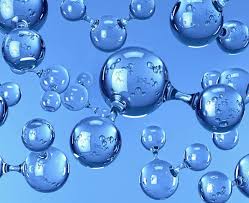A solvent is a substance that can dissolve a solid, liquid, or gaseous solute, resulting in a solution.
There are generally two types of solvent depending on the type of compound that they dissolve. These include:
1. POLAR SOLVENT
2. NON-POLAR SOLVENTS
WHAT ARE POLAR SOLVENTS?
- Aprotic solvents
- Non-Aprotic solvents
To further understand the concepts of these terms, let take a step backward to understanding what a chemical polarity and a chemical dipole is.
CHEMICAL POLARITY
CHEMICAL DIPOLE
In chemistry, a dipole refers to a molecule or a radical that has a concentration of positive electric charges at one end and a concentration of negative electric charges at the other end. A dipole moment occurs when a molecule’s positive and negative poles separate or move farther apart.
Polarities in solvents occurs due to the nature of the bonding their molecules are made of. In a covalent bond, atoms may bond to form either a polar or a non-polar molecule. This polarity of molecules depend on the differences in the electro-negativity value of their bonded atoms. Electro-negativity is the abiity of an atom to attract electrons. Atoms in molecules are bonded by a covalent bond, which involves the sharing of electrons pairs. Sometimes in a covalent bond one atom can be more electro-negative than the other, causing a disparity in the electrons distribution in the bond, (one side of the bond will have a slight positive charge, while the other side will have a slight negative charge). When this happens, the type of molecule produced is called a polar molecule. But when atoms of the same level of electro-negativities bond together, there will be no disparity in electrons distribution in the bond, resulting in the formation of a non-polar molecule.
When a molecule is said to have a polar covalent bond, then the electrons of the atoms forming the bond are unequally distributed(one end will have slightly more electrons than the other end).The entire molecule will be a polar molecule, and they thus combine to form a polar compound.
On the other hand, when the electrons of the atoms forming the bond are completely distributed in such a way that their net electrical charges cancel out, then the nature of the bond will be non-polar. the molecules will not have the charges present at the ends due to the reason that electrons are finely distributed.
The most common example of a polar solvent is water. A water molecule has two O-H bonds. The difference in electro-negativity between the oxygen atom and hydrogen atom is considerably high. Therefore, it is a polar covalent bond. The oxygen atom is more electro-negative. Hence, the oxygen atom gets a partial negative charge while two hydrogen atoms get a partial positive charge.
The reason why polar solvents are capable of dissolving polar compounds are because both polar solvents and polar compounds have dipole moments and have oppositely charged moieties in the same chemical compound. The positively charged moiety of a solid compound can be attracted by the negatively charged moiety of a solvent molecule and vice versa, which can lead to the dissolution of the polar compound in the polar solvent.
In a solution, a polar molecule cannot be mixed with the non-polar molecule. For example, consider water and oil. In this solution, water is a polar molecule whereas oil behaves as a non-polar molecule. These two molecules do not form a solution as they cannot be mixed up.




















0 comments:
Post a Comment